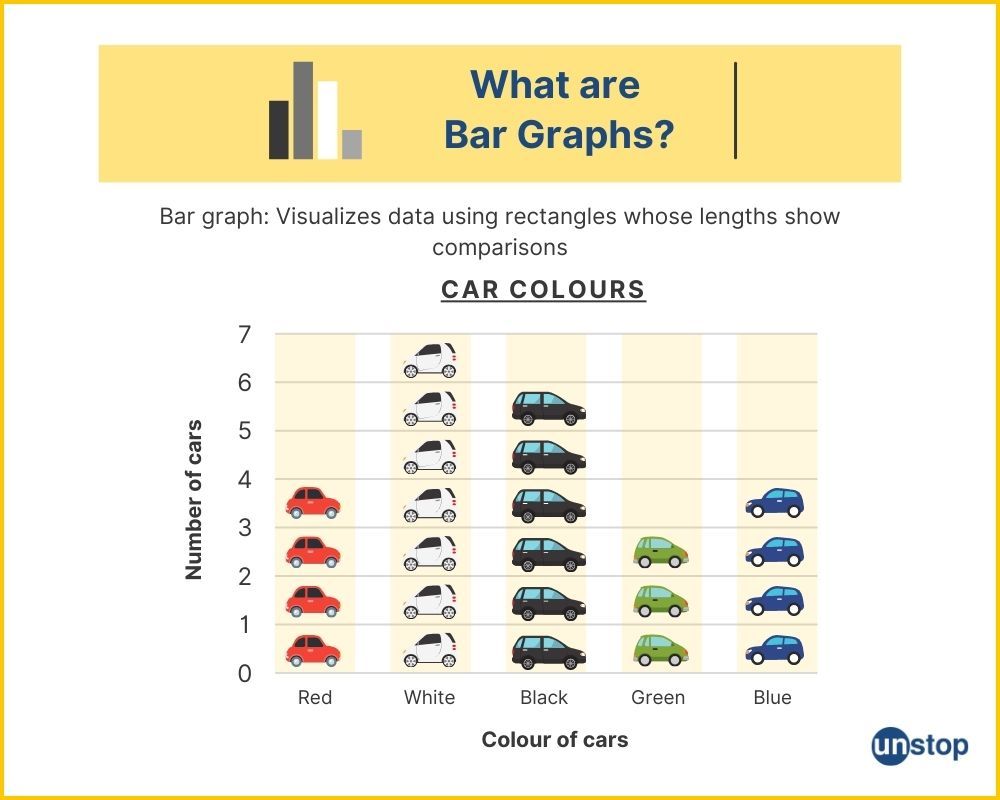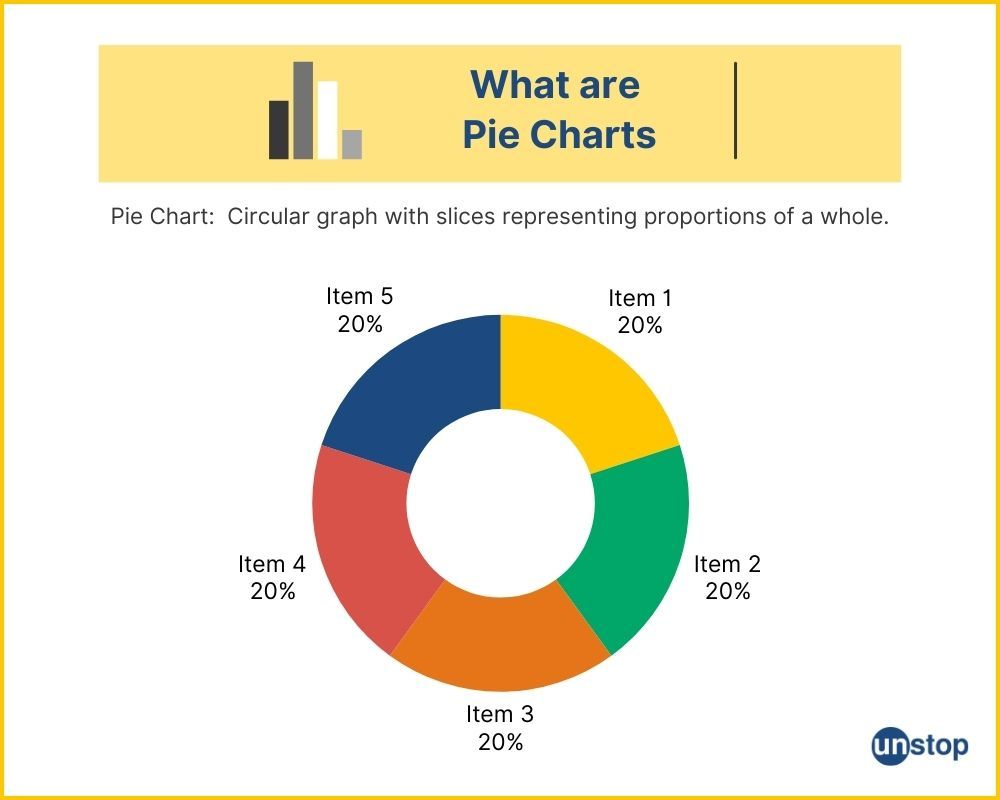- What is Data Interpretation?
- Importance of Data Interpretation
- Steps for Effective Data Interpretation
- Types of Data Interpretation
- Effective Visualization in Data Analysis
- Data Interpretation Formula
- Data Interpretation Tricks
- Data Interpretation Questions With Solutions
- Final Remarks
- Frequently Asked Questions
Data Interpretation: Definition, Steps, & Practice Questions

Curious about how to make sense of data? Want to unlock the power of information at your fingertips? Then, explore the world of data interpretation.
Data interpretation (DI) is crucial for quantitative aptitude tests and real-world problem-solving. It involves the ability to analyze, understand, and draw meaningful conclusions from numerical data presented in various formats.
Data interpretation questions are designed to assess a candidate's ability to:
- Process information: Quickly and accurately understand the data presented.
- Identify patterns: Recognize trends, relationships, and correlations within the data.
- Calculate and analyze: Perform calculations and draw logical conclusions based on the data.
- Communicate findings: Clearly and effectively present the results of the analysis.
In today's data-driven world, strong data interpretation skills are essential for success in fields such as business, finance, engineering, and research. By mastering DI, individuals can make informed decisions, solve complex problems, and gain a competitive edge.
What is Data Interpretation?
Data interpretation involves analyzing, summarizing, and making sense of complex data sets to extract meaningful insights. It helps transform raw data into actionable information. By examining trends, patterns, and relationships within the data, businesses and organisations can make informed decisions based on data-driven evidence.
Importance of Data Interpretation
Informed Decisions
Data interpretation guides strategic decision-making. By analyzing and understanding the data at hand, one can extract valuable insights that guide decision-making processes. These insights provide a clear picture of current scenarios, allowing for strategic actions to be taken. By interpreting data effectively, businesses can identify opportunities for growth, detect potential risks, and optimize their operations for better outcomes.
Predicting Future Trends
Through statistical modeling and trend analysis, data interpretation empowers decision-makers to predict future trends and outcomes accurately. By recognizing patterns within the data, organizations can anticipate market shifts, customer preferences, and potential risks. This proactive approach aids in preparing for challenges and capitalizing on opportunities.
Minimizing Risks and Uncertainties
One of the significant advantages of data interpretation is its ability to minimize risks and uncertainties in decision-making processes. By leveraging historical data and real-time information, organizations can assess potential risks more effectively. This proactive risk management approach enhances overall decision quality and reduces the likelihood of adverse outcomes.
Uncover Hidden Patterns
Through data interpretation, users can also uncover hidden patterns and correlations that may not be apparent at first glance. For example, businesses can more effectively target specific customer segments and personalize marketing strategies for better engagement through data interpretation.
Steps for Effective Data Interpretation
Data Cleaning
Data cleaning is the initial step in data interpretation. It involves removing errors, duplicates, and inconsistencies from datasets. This process ensures accurate analysis results.
To clean data effectively:
- Identify and eliminate outliers that can skew analysis.
- Address missing values through imputation or removal.
Preprocessing
Preprocessing prepares data for interpretation by transforming and standardizing it. Normalization and scaling techniques are commonly used to bring all features to a similar scale.
During preprocessing:
- Apply techniques like one-hot encoding for categorical variables.
- Normalize numerical data to improve model performance.
Identifying Patterns and Trends
Identifying patterns and trends in data is crucial for extracting valuable insights. It helps in making informed decisions based on data-driven evidence.
To identify patterns effectively:
- Utilize visualization tools like histograms and scatter plots.
- Leverage statistical methods such as regression analysis to uncover relationships.
Types of Data Interpretation
There are primarily six different types of data interpretation:
Tabular Data Interpretation
Tabular DI is a structured way of presenting data in rows and columns, making it easier to compare and analyze information.
Tabular DI allows for easy identification of patterns, trends, and relationships within the data, facilitating decision-making processes and effectively communicating complex information to a wider audience.
Bar Graphs

Bar graphs are used to compare different categories of data. They consist of rectangular bars with lengths proportional to the values they represent.
Bar graphs are beneficial for presenting nominal data and showing trends over time through line charts.
Caselet Forms
Interpreting caselet forms involves analyzing short cases or scenarios to extract relevant information. It helps in understanding complex data sets efficiently.
Practicing caselet forms enhances analytical skills and aids in making informed decisions based on findings from interviews or observations.
Radar/Web Data
Analyzing radar/web data involves visualizing multivariate data in a circular format to identify patterns and relationships between variables.
Radar/web data interpretation is crucial for identifying outliers and anomalies in datasets, contributing to accurate decision-making processes.
Pie Charts

Pie charts are a visualization technique used to represent data in a circular graph, where each slice of the pie represents a proportion of the whole.
They are effective in showing the relationship between parts and the whole, making it easy to compare different categories or groups.
Effective Visualization in Data Analysis
Visual representation, such as graphical representations and maps, plays a crucial role in data analysis. It simplifies complex datasets and allows for quick comprehension.
By utilizing visual aids like examples and well-defined axes, analysts can easily identify patterns, trends, and outliers within the data. This enhances the accuracy of interpretations.
Effective visualization also enables users to grasp information quickly. For instance, a bar graph showcasing the average number of sales per month provides a straightforward comparison.
Data visualization tools like Tableau and Power BI are instrumental in transforming raw data into meaningful insights. These tools offer various chart types, interactive features, and customization options to streamline the analysis process.
Data Interpretation Formula
Data interpretation problems often involve analyzing and manipulating data in various formats like tables, graphs, and charts. While no single "magic formula" applies to every problem, some common formulas can be helpful depending on the type of data and the question being asked. Here are a few key formulas to remember:
Percentage: This formula helps calculate the percentage of a part (P) relative to a whole (W).
-
P (%) = (Part / Whole) x 100
Average: This formula finds the average value of a set of numbers.
-
Average = (Sum of all values) / (Number of values)
Ratio and Proportion: This expresses the relationship between two numbers (a:b) and can be written as a fraction (a/b).
Profit/Loss:
- Profit: This formula calculates the profit made by selling an item at a higher price than its cost.
- Profit = Selling Price - Cost Price
- Loss: This formula calculates the loss incurred by selling an item at a lower price than its cost.
- Loss = Cost Price - Selling Price
- Profit/Loss Percentage: This formula expresses profit or loss as a percentage of the cost price.
- Profit/Loss Percentage = (Profit/Loss / Cost Price) x 100
Simple Interest: This formula calculates the interest earned on a principal amount (P) at a certain rate (R) for a specific time period (T).
-
Simple Interest = (P x R x T) / 100
These are some foundational formulas. Depending on the problem, you might encounter formulas related to:
- Weighted Average: When dealing with data points with different weights or significance.
- Standard Deviation: To measure the spread of data points around the mean.
- Percentage Change: To calculate the increase or decrease in a value over time.
Remember: The most important aspect of data interpretation is understanding the context and relationships between data points and applying logical reasoning to solve the problem. Don't rely solely on memorizing formulas; focus on understanding the concepts they represent.
Data Interpretation Tricks
Here are some tricks to tackle data interpretation problems:
Before you crunch numbers:
- Read Carefully: Understand the labels, units, and any additional information provided.
- Identify the Task: Are you asked for a comparison, a specific value, or a trend?
While working with data:
- Focus on Relationships: Look for connections between the data points in tables, graphs, or charts.
- Estimate & Simplify: Don't get bogged down by complex calculations. Round numbers or use estimation to simplify calculations.
- Use Ratios & Proportions: Ratios and proportions can be powerful tools for comparing data points.
Answering the questions:
- Focus on Keywords: Identify keywords in the question that relate to specific data points or calculations.
- Check Units: Ensure your final answer has the correct units (e.g., percentage, total amount).
- Logical Reasoning: Use your understanding of the data and the scenario to eliminate illogical answer choices.
Additional Tips:
- Practice with different data types: Tables, graphs, charts, etc.
- Focus on weak areas: Identify areas where you struggle and practice those specific types of questions.
- Review time management: Develop a strategy to allocate time for reading, analyzing, and answering questions.
Data Interpretation Questions With Solutions
Q1. If a survey of 100 people showed that 60 preferred coffee over tea, what percentage of the sample preferred tea?
Options:
a) 40
b) 50
c) 60
d) 30
Answer: a) 40
Solution Explained:
To solve this, let’s first find the number of people who preferred tea. This will be the number of people who preferred coffee subtracted from the total number of people who took the survey:
- People who prefer tea = 100-60 = 40
- Percentage calculation: (40/100)*100 = 40%
Q2. In a pie chart representing monthly expenses, if 30% is allocated to rent and 20% to groceries, what percentage of the chart represents other expenses?
Options:
a) 40
b) 50
c) 30
d) 60
Answer: b) 50
Solution Explained:
To find the value of remaining expenses, subtract the value for rent and groceries from the total:
-
Remaining Expenses = 100-(30+20)=100-50=50.
Q3. If a bar graph shows the number of books sold by a bookstore in different months, and April has the highest sales with 500 books sold, and March had 300 books sold, what is the difference in sales between April and March?
Options:
a) 100
b) 300
c) 200
d) 250
Answer: c) 200
Solution Explained:
This requires basic subtraction calculation. Since April had the highest sales, we will subtract the books sold in March from those sold in April.
-
The difference in sales between April and March: 500-300 = 200
Q4. A line graph represents the temperature over a week. If Monday's temperature is 20°C and Wednesday's is 25°C, what was the average temperature for those two days?
Options:
a) 45°C
b) 25°C
c) 22.5°C
d) 30.5°C
Answer: c) 22.5°C
Solution Explained:
This requires basic average calculation. The average temperature will be the sum of the temperatures on both days divided by the number of days, i.e., 2.
-
Average temperature=(20+25)/2=45/2=22.5
Q5. If a table displays the number of students in each grade level in a school, and there are 200 students in total, with 50 in Grade 9, 60 in Grade 10, 40 in Grade 11, and the rest in Grade 12, how many students are in Grade 12?
Options:
a) 75
b) 100
c) 90
d) 50
Answer: d) 50
Solution Explained:
This requires basic subtraction calculation. To get the number of students in Grade 12, subtract the students in Grade 9, 10 and 11 from the total students in school.
- Students in Grade 12 = 200 - (50+60+40) = 200-150=50
Q6. A line graph shows the sales of a product over four years. If the sales were INR100,000 in the first year and increased by 20% each subsequent year, what were the total sales over the four years?
Options:
a) 500,000
b) 400,000
c) 360,000
d) 536,800
Answer: d) 536, 800
Solution Explained:
To find the total sales over the four years, we can calculate the sales for each year and then sum them up.
- Sales in the first year (year 1) = INR 100,000
- Sales increase by 20% each subsequent year
Let's calculate the sales for each year:
- Year 1: INR 100,000 (Given)
- Year 2: 100,000×1.20100,000×1.20 (20% increase) = INR 120,000
- Year 3: 120,000×1.20120,000×1.20 (20% increase) = INR 144,000
- Year 4: 144,000×1.20144,000×1.20 (20% increase) = INR 172,800
Now, let's sum up the sales for all four years:
- Total sales over four years=100,000+120,000+144,000+172,800=536,800
So, the total sales over the four years were INR 536,800.
Q7. A table displays the scores of students in a class. If the mean score is 75 and the sum of the scores is 750, how many students are there in the class?
Options:
a) 20
b) 10
c) 40
d) 30
Answer: b) 10
Solution Explained:
To solve this, we use the formula for the arithmetic mean, which is
Arithmetic Mean = Sum of Values/Count of values
- Let’s consider the number of students in the class to be x.
- As per the Arithmetic Mean formula, 750/x = 75.
- Solving for x:
- x=750/75
- x=10
- Thus, there are 10 students in the class.
Q8. In a bar graph representing the heights of students in a class, if the tallest student is 180 cm and the shortest is 150 cm, what is the range of heights?
Options:
a) 15
b) 25
c) 10
d) 30
Answer: a) 30
Solution Explained:
The range of heights can be calculated by finding the difference between the tallest and shortest heights.
- Tallest student height = 180 cm
- Shortest student height = 150 cm
- Range of heights = Tallest height - Shortest height
- Range=180 cm−150 cm=30 cm
- So, the range of heights in the class is 30 cm.
Q9. A pie chart shows the distribution of expenses in a household. If 40% of the expenses are for food and 20% for utilities, what percentage of the remaining expenses are for entertainment?
Options:
a) 50
b) 20
c) 40
d) 60
Answer: c) 40
Solution Explained:
The percentage of expenses for entertainment is 40%, calculated by subtracting the sum of expenses for food and utilities (60%) from 100%.
Q10. A line graph shows the population growth of a city over 10 years. If the population was 100,000 in the first year and doubled every 5 years thereafter, what was the population in the tenth year?
Options:
a) 400,000
b) 200,000
c) 600,000
d) 500,000
Answer: a) 400,000
Solution Explained:
To find the population in the tenth year, we need to calculate the population growth over 10 years.
Given:
- Population in the first year (year 1) = 100,000
- Population doubles every 5 years
We can break down the population growth over the 10 years into intervals of 5 years:
- Year 1: Population = 100,000 (Given)
- Year 5: Population doubles from the first year = 100,000×2=200,000
- Year 10: Population doubles again from year 5 = 200,000×2=400,000
So, the population in the tenth year is 400,000.
Q11. A bar graph represents the number of cars produced by a factory each month. If the factory produced 500 cars in January and the production increased by 10% each month, what was the total production over the first six months?
Options:
a) 3500
b) 3860
c) 4000
d) 3250
Answer: b) 3860
Solution Explained:
To find the total production over the first six months, we need to calculate the production for each month and then sum them up.
Given:
- Production in January = 500 cars
- Production increases by 10% each month
Let's calculate the production for each month:
- January: 500 cars (Given)
- February: 500×1.10500×1.10 (10% increase) = 550 cars
- March: 550×1.10550×1.10 (10% increase) = 605 cars
- April: 605×1.10605×1.10 (10% increase) = 665.50 cars (round to 666 cars)
- May: 666×1.10666×1.10 (10% increase) = 732.60 cars (round to 733 cars)
- June: 733×1.10733×1.10 (10% increase) = 806.30 cars (round to 806 cars)
Now, let's sum up the production for the first six months:
-
Total production over the first six months=500+550+605+666+733+806=3860
So, the total production over the first six months was 3860 cars.
Study the topic in detail and enhance your understanding through this course on Quantitative Aptitude.
Final Remarks
By mastering data interpretation techniques, you can make informed decisions, identify trends, optimize resource allocation, and enhance problem-solving skills. Effective visualization of data is crucial for deriving actionable insights and staying ahead in today's data-driven world. Embracing these practices will not only streamline your decision-making process but also lead to more strategic actions that drive success.
Frequently Asked Questions
Q1. What is data interpretation and why is it important?
Data interpretation involves analyzing, understanding, and making sense of data to derive meaningful insights. It is crucial as it helps in informed decision-making, identifying trends, optimizing resources, and solving problems effectively.
Q2. How can effective data interpretation enhance decision-making processes?
By effectively interpreting data, organizations can make informed decisions based on insights derived from the data analysis. This leads to improved strategic planning, better resource allocation, and overall enhanced decision-making processes.
Q3. How can data visualization play a role in enhancing data analysis?
Effective visualization of data through charts, graphs, and dashboards can simplify complex information into easily understandable visuals. This aids in quick comprehension of trends, patterns, and outliers within the data, facilitating better decision-making processes.
Q4. How do you identify trends and patterns in data?
Identifying trends and patterns involves visually inspecting data through charts and graphs, calculating summary statistics, and conducting statistical analyses. Common patterns include upward or downward trends, seasonal variations, and cyclical patterns.
Q5. What are some common pitfalls to avoid in data interpretation?
Common pitfalls include misinterpreting correlation as causation, overlooking outliers, sampling bias, failing to consider context, and relying solely on summary statistics without understanding the underlying data distribution.
Q6. How can data interpretation be effectively communicated?
Effective communication of data interpretation involves clearly and accurately presenting findings through visualizations, written reports, and presentations. It's important to tailor the communication to the audience, provide context, and highlight key insights and implications for decision-making.
Suggested Reads:
- Arithmetic Progression- Notation, Formulas, Questions And Answers
- What Is Number In Maths: History, Types, Operations & More
- Arithmetic Mean: Get Definition, Formula, Solved Practice Questions
- HCF And LCM Methods: Formula, Practice Questions And Answers
- Decimal To Fraction Conversion Guide (+ Solved Questions)
I’m a reader first and a writer second, constantly diving into the world of content. If I’m not writing or reading, I like watching movies and dreaming of a life by the beach.
Login to continue reading
And access exclusive content, personalized recommendations, and career-boosting opportunities.
Subscribe
to our newsletter
















Comments
Add comment